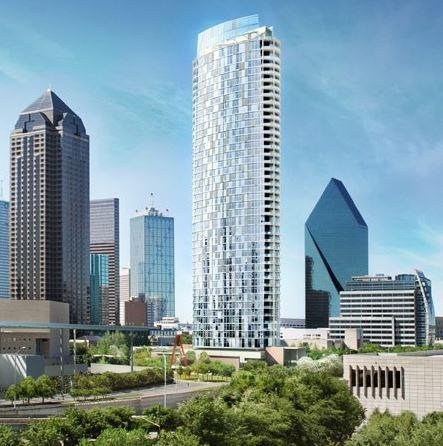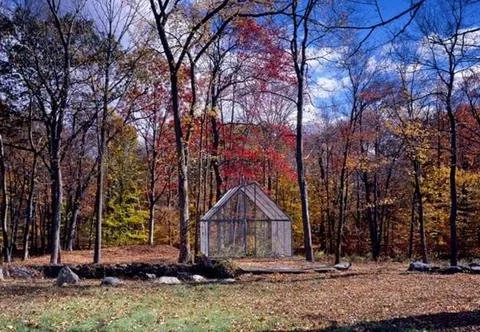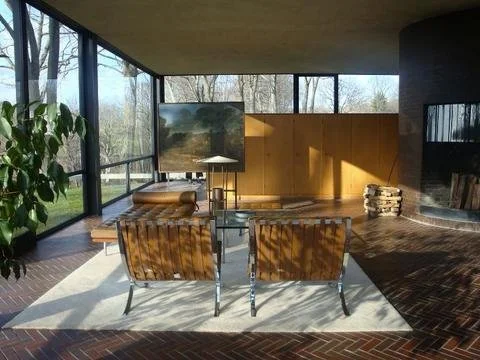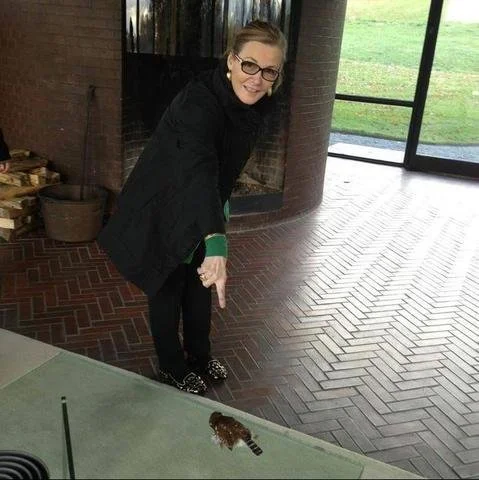Glass Houses: Architectural Digest and Sherry Hayslip Speak Out
We recently came across an article on ArchitecturalDigest.com titled “5 Examples of Iconic Modern Architecture That Have Serious Flaws”. The article looks at some of the most notable modern structures in today’s society and how they each carry their own flaws. One of the homes mentioned in the article was Philip Johnson’s Glass House, which we blogged about back in 2014. We thought it would be fun to compare Architectural Digest’s post to our very own only three years ago:
““People who live in glass houses have to answer the door.””
Why are glass houses so fascinating? I have been in a few lately, and it has gotten me thinking.
There is something sublime about the purity of a glass structure, so crystalline and elegant. This is especially notable in glass skyscrapers' tall shards of sparkling faceted reflections.
Ironically, the Museum Tower debacle in Dallas has illustrated the negative side of reflectivity in the curved angle boomeranging of the Texas sun onto precious and fragile nearby structures. That building isn’t so pure either, with a checkerboard effect on the glass. I prefer a single material or a soft ombré effect of shading from less transparent to more translucent but never the visual cacophony of random different colors of glass panels, checkered here and there. So Dallas’ Museum Tower fails the sublime test on more than one count, although the views and large spaces are very glamorous.
On a more intimate human scale, a simple glass house placed in a landscape of rolling hills and privacy, reveals the glory of living in a transparent space, unencumbered by the solid separation from life beyond that the typical house provides. Rather than a few windows framing nice views, a glass house inserts itself INTO the world around it. During the day, a voyeur's paradise of watching nature in its full expression creates a sense of oneness with the world beyond.
Recently as I visited the Glass House by Philip Johnson I was struck by the vulnerability of total exposure.
Yes, I would like to sleep in that bedroom looking out on the meadows and gardens. Yes I would like to sit and read close by the rolling hills and the clouds dancing above the trees in a lurid minuet of frothy formations. Despite my idealization of what it must be like to occupy a house like this, something unexpected happened.
I stepped apart from the small group of architectural obsessives I had traveled here with. I wanted to feel the house without anyone near me. I paused by the exquisite flowers on the dining table so carefully selected and placed by Mr. Johnson himself.
I touched the cool glass wall and looked down toward the elegant Rem Koolhaas ghost house on the edge of the little forest. I tried to feel the house. To understand what living here must have felt like. I was still and quiet.
And just being still in this place, taking a moment to experience the aura of this iconic structure, made me feel....well, anxious. I was trying to channel peace and oneness with nature, to connect with the simplicity of the forms and free myself from any cravings for cozy spaces, sumptuous textiles, comfy chairs and a craving for a secure feeling refuge.
Then I glanced at the coffee table and saw a dead bird.
Oh my god, I thought. Is this a poor creature that somehow penetrated the interior, perhaps through an opened door or the chimney and then died in an effort to escape? Should I tell the curator? How creepy. What a reminder of the ominous presence a glass structure must be to flying birds, tricking them in to trying to fly into the house through impenetrable and deadly glass. But wait. It is art. In an effort to keep contemporary art relevant to the house and grounds, different artists have been invited to place pieces in the Glass House on a rotating basis. This one has placed a dead bird on the coffee table.
Hmmmm.
Perfectly taxidermied I am sure.
But still disturbing.
And extremely thought provoking.
I can see the great beauty and advantages to a glass house, but this all made me contemplate the down side. What are the deeper aspects, the less pretty things that glass structures connote? They are revealing...the bad and good of ourselves and our lives can be witnessed by people we never see. At night, especially, a glass house is a black box, within a dark mirror of all that transpires and from without a stage, highly illuminated, seen by those in the darkened hall of the world around. Sometimes, a glass house lies. It appears that it is transparent, but really when the outside sun is brighter than the inside, it isn't transparent at all but a one sided view from within, providing a place to hide in broad daylight....what we see from outside is the cumulative vision of verdant hills and passing clouds, all mirrored in the glass, while the inside is hidden from view by the more powerful light of nature.
Perhaps most important is that glass houses are dangerous.....they lure us to their beauty like a swallow and stop us hard from reaching the realm beyond.
Love,
Sherry
View Architectural Digest's post on Modern Architecture here to compare.






